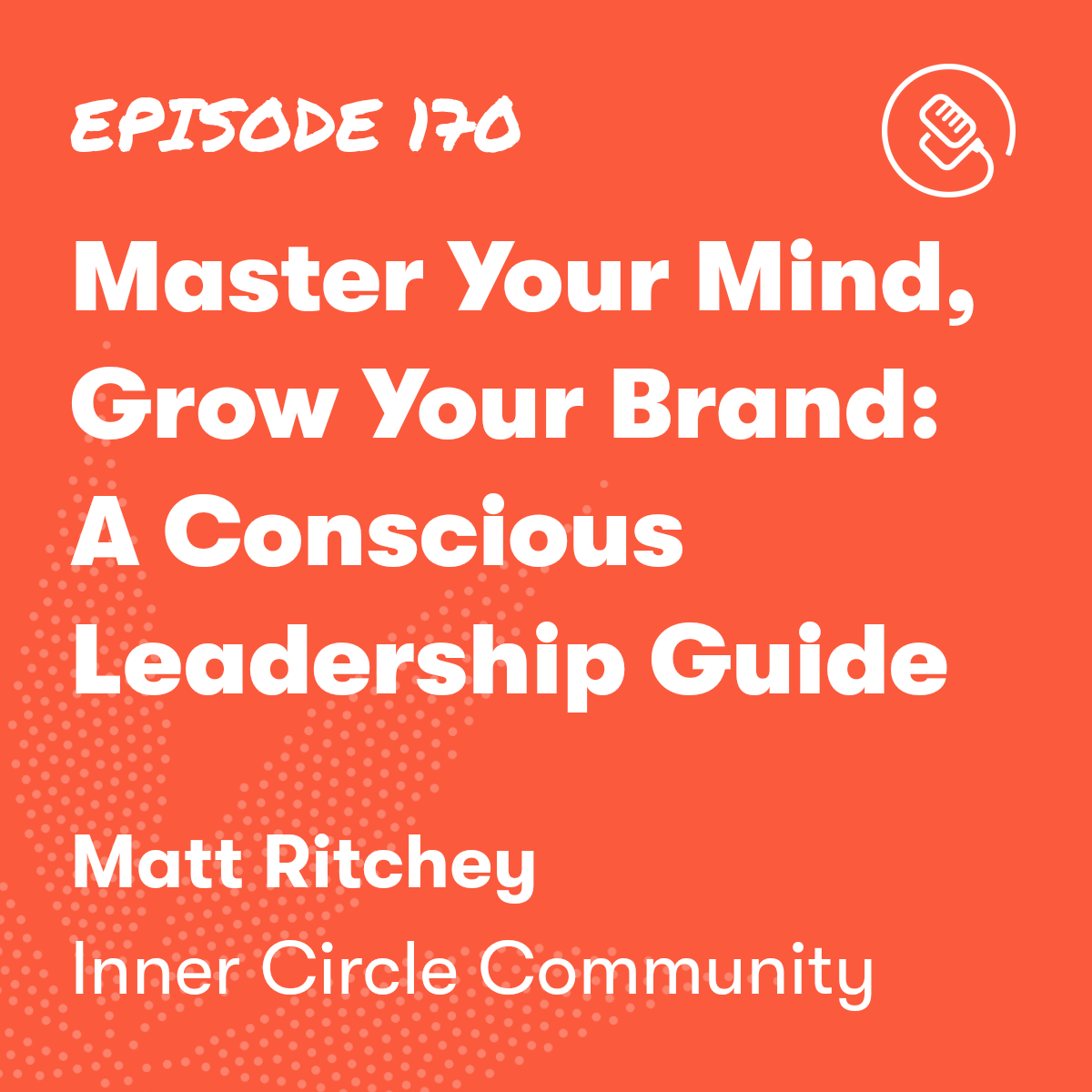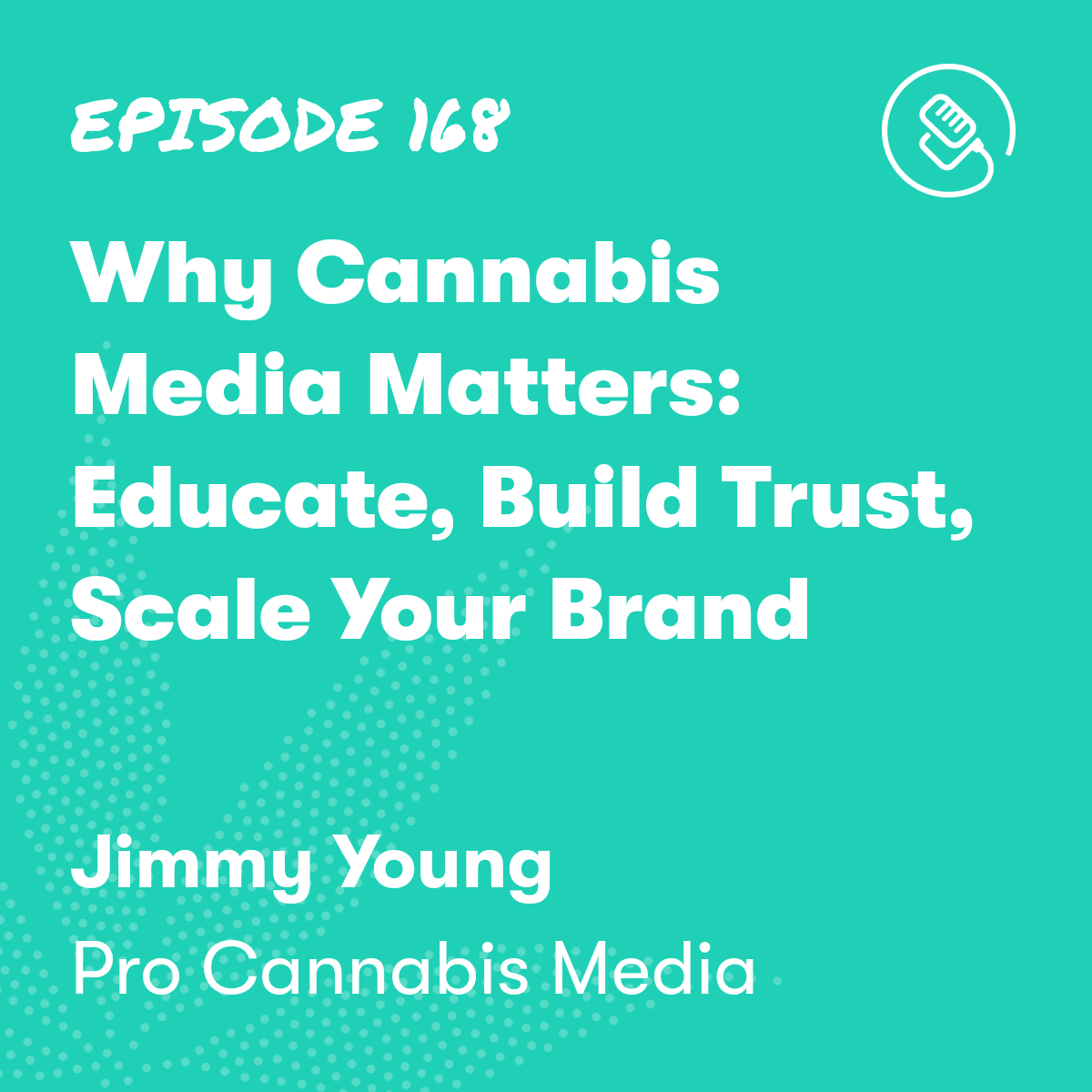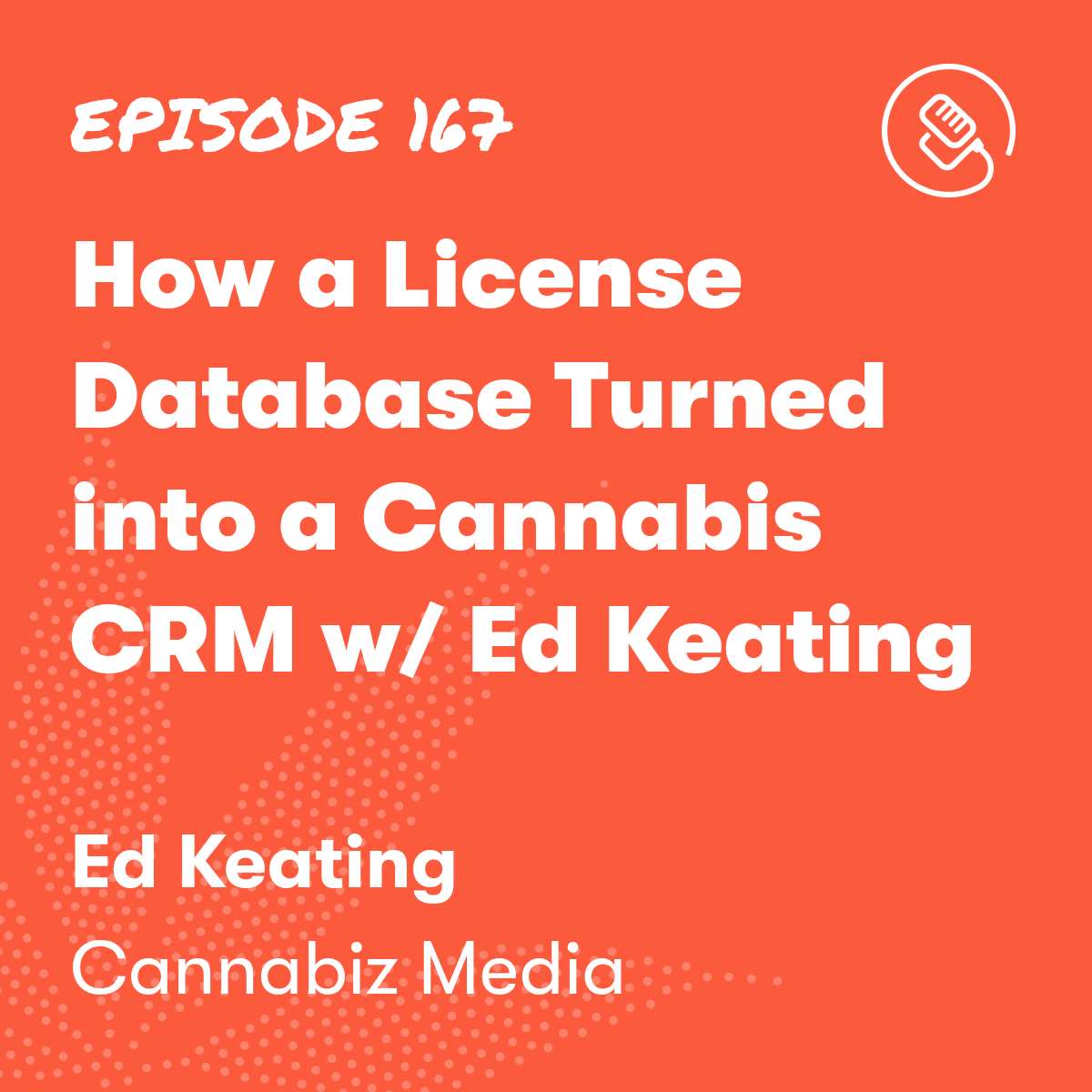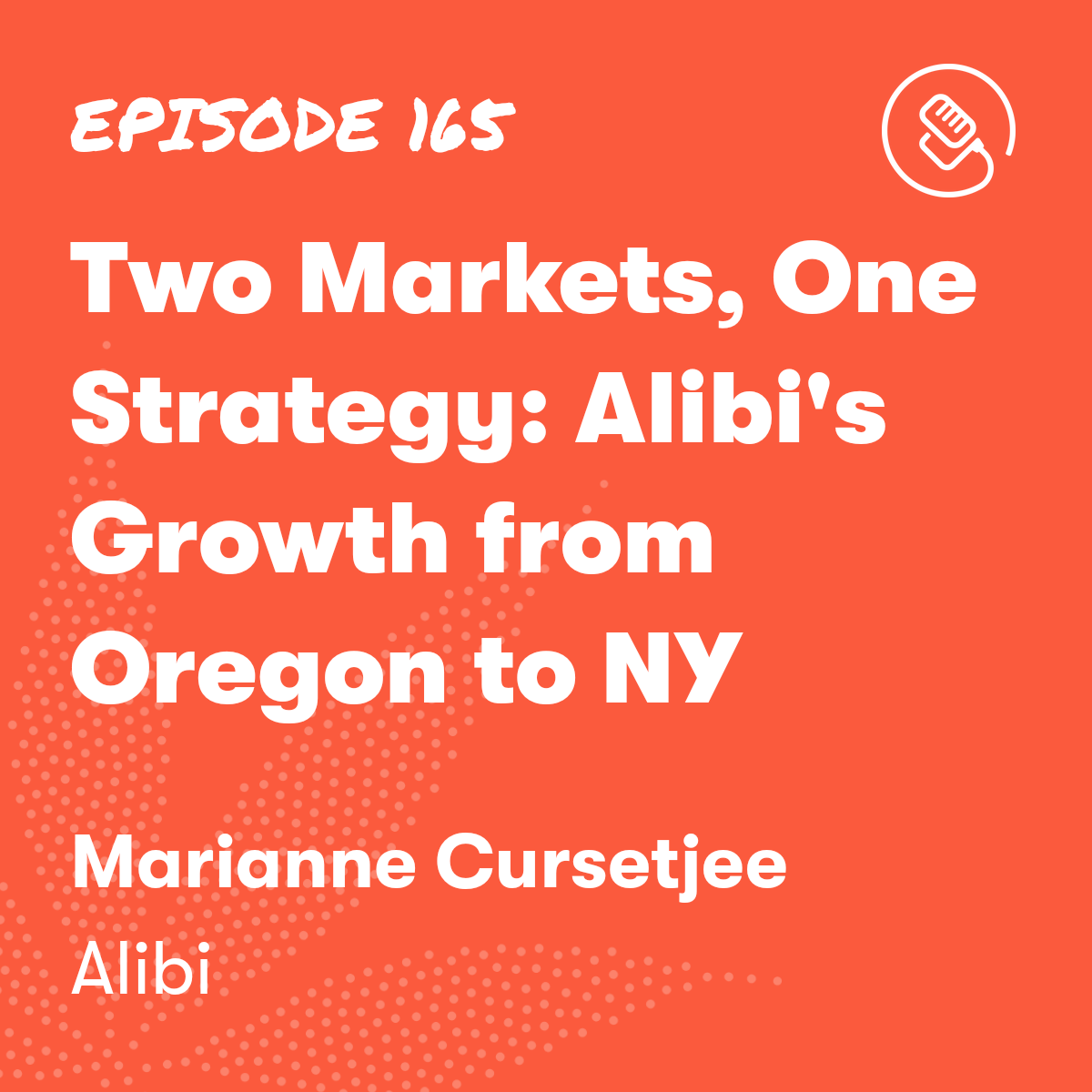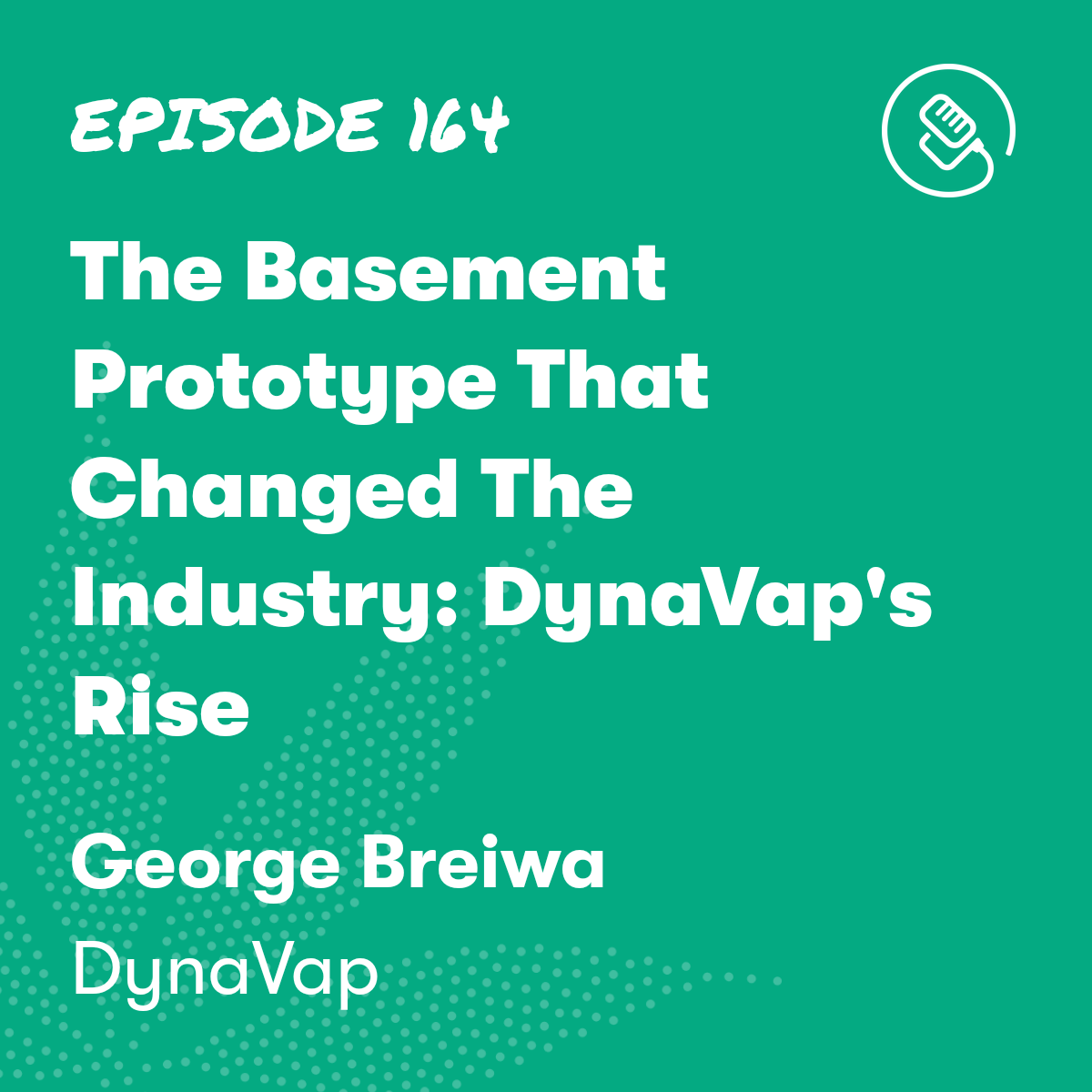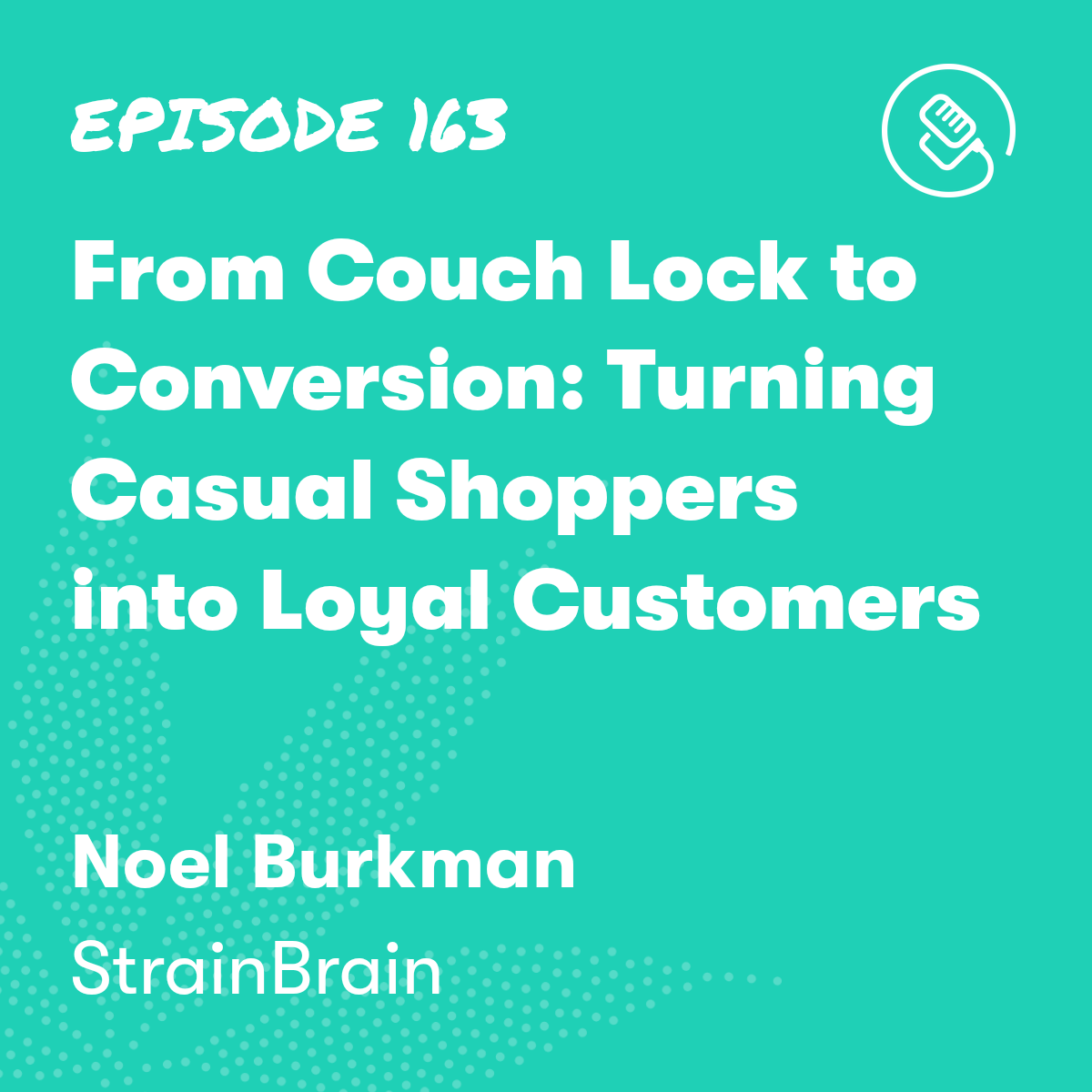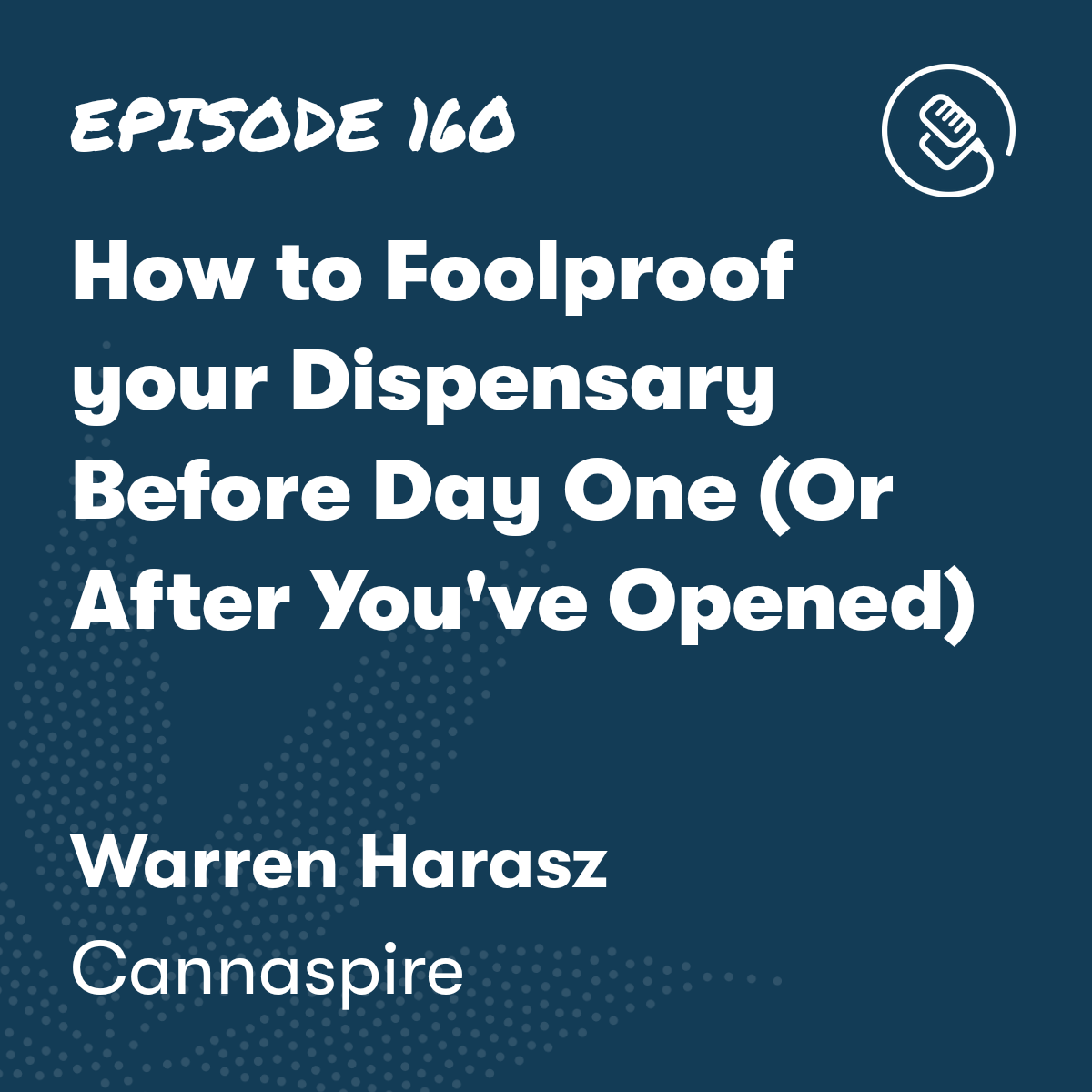

From Metrics to Millions: Unlocking Profitability with Naomi Granger
Episode Description

Episode Transcript
Intro: [00:00:00] Welcome to the KayaCast, the podcast for cannabis businesses looking to launch, grow, and scale their operations. Each week, we bring you interviews with industry experts and successful retailers, plus practical tips and strategies to help you succeed in the fast growing cannabis industry.
Tommy: In this episode, we are joined by Naomi, the founder and CEO of the National Association of Cannabis for Accountants and Tax Professionals. Naomi talks about the hidden cost of inventory as well as employee turnover. She also talks about what to look for when choosing the right accountant. I hope you guys enjoy.
Naomi, thank you so much for joining the pod today.
Naomi: Thank you for having me. I'm happy to be here.
Tommy: What are some KPIs that a business should look at prior to them expanding?
Naomi: So a lot of times, so as an accountant, and I'll tell you a little bit of, of my [00:01:00] background and my story, when I first started in this industry, like I would get clients and because I'm the numbers person, they look to me. And expect for me to make them profitable. And operators and business owners need to understand that accounting professionals, we look at the numbers after the fact.
So things have already happened and then we see what happened and we interpret it. So, Oh, I'm not sure you, you, you launched a new marketing campaign and we see a huge increase in sales. And so we record that and say, Hey, yeah, you guys did really good this month, or. Something happened and we see a huge decrease, or you got hit with a notice, um, some type of, of penalty or anything, and we see that and we record it and we let you know.
And so you have to get in front of the actual activity happening, in order to become more profitable. So profitability starts with your operations. It starts with what types of inventory are you purchasing? And do, do anybody Does [00:02:00] anybody in your market or your region or your area even want that inventory?
Like are you, are you matching the inventory with the people who are shopping in your store? What is going on inside of your store? Are your bud tenders upselling properly? Do they understand the product? Do they understand how to talk to your, your customers and your, your clients who come into the store to help make sure maybe this customer is stuck on the flavor profile And the second customer wants to understand the terpenes, making sure that they understand how to ebb and flow and how to go back and forth and explain the product and in the language that that customer is, is speaking.
Um, so what, how is your training going on inside your store? What type of inventory are you part, um, purchasing? What's happening with your marketing? Do you have any new marketing campaigns that are out there, um, that might be driving sales? So looking at all of those different, um, Operating metrics is something that you need to look at first [00:03:00] before you get to the accountant because the only thing that we see is your profit margin and we're going to say, Hey, well, you need to decrease your, your cost of goods sold in order to become more profitable or decrease your expenses, payroll, rent, operating expenses to become more profitable.
But there's other things that are happening inside the store that really drives that profitability.
Tommy: Well, you mentioned inventory. What are some costs related to having just the wrong inventory?
Naomi: Yeah, so you need to start, like some of the KPIs would be average per customer. So what's your average ticket price per customer?
If people are coming into your store, how much are you able to sell to them? How many units per transaction? That's another, so you can have the total value of that sale as well as the number of items that are purchased in that sale. So units per transaction is another KPI you can look at, um, and attachment rates.
How, how, and that's kind of goes with units per transaction. So [00:04:00] when they come in, um, are they, if they're just buying, if they're buying the flower, are they also buying the paper? Or, you know, are they also buying the lighter? Like what other things are they attaching to that purchase? So you should be looking at some of those things and then understanding like are your customers, um, are they people who enjoy using the concentrates and And topicals or vapes are these, um, your traditional flower smokers, flower consumers.
So you need to understand your inventory assortment and what you need to bring in and what the people in your area are more inclined to purchase. And, you know, every single area, like if it's an outdoorsy area where, you know, Colorado and people are going for walks, walking their dogs, going hiking, they may want to smoke.
But if you're in a Because, like you're in the middle of New York City and people are going to work and going into an office, they might want something that's a little bit more discreet and something [00:05:00] edible, um, that doesn't have that smoke. So, it's just making sure that you understand what your people want and looking at the data out there, I just had a video.
I just did a, um, a webinar. I know, um, it was, I think it was New Frontier Data or Headset, or one of these, um, they did an update and they said, um, they, they did it by region and they kind of, um, they have, look at that data to see what's selling in all the different regions so that you can make sure that you're populating your store with the right product.
Tommy: Well, that's valuable. You, you mentioned something that is really interesting to me is, There are KPIs, so you mentioned KPIs, hard KPIs that everyone should track, but there's also soft KPIs too. The hidden costs that retailers may not be aware of. Can you talk a little bit about that?
Naomi: Yeah, so the hidden cost in a lot of that is with employees and with, um, retention.
It costs money to bring in [00:06:00] a new bud tender and it costs money every time you lose a bud tender. So if you think about it, there are, you know, in employee training, like there's so many different things that come into that. And so, you know, your bud tender, That's who your customers and your clients who are coming to your store.
That's who they interact with on a daily, weekly, monthly basis. However often they come into that store, they build a relationship with that person. If that bud tender is trained very well and gives them really good recommendations and helps them, they're going to trust that person. So if you have a lot of, if you have high turnover and those bud tenders are leaving, there's a possibility that that customer With that, you can see that the customer may leave with that bud tender or follow that bud tender if they go to the neighboring store, you know, down the road.
Um, so there's, there's costs associated with, with turnover. Um, when that bud tender leaves, there's other costs associated with IP. So that you may have spent, you know, months in however long that they've been with your company, [00:07:00] um, training that bud tender. Maybe your cultivators came in and they had pop ups, so that bud tender knows everything from the cultivator about those products, and they're able to really sell those products to your customers.
But when that bud tender leaves, if that's not documented, and if there's no cross training going on, then you're Then that IP also leaves with that butt tender. Um, and so you're starting over with the new person that you put in place. Um, so there's a, a lot of cost that's associated with just employee turnover.
Tommy: That's huge. And that's very hidden too. Nobody really thinks about the cost of training, hiring, The lost productivity when you actually bring somebody in and they can't service your customers.
Naomi: Right, yeah. Yeah, it's
Tommy: huge. Is there a hidden cost to inventory as well?
Naomi: Yeah. So when you have inventory, a lot of times, if it's not moving, a lot of times a owner, a business owner will look at that and they'll still want to get [00:08:00] a percentage of, so let's say they, They spent 50 on this product and they want to still make a profit.
And so they don't want to go below 50 or 60 or whatever their little profit margin is. Um, but what they don't understand is the longer that that inventory sits there, the more expensive it is. And so you're having to pay for, like in cannabis, it's highly regulated. You have to do regular inventory counts.
It costs money to do, Inventory counts, you have to close your store, you have to have your butt tenders, and your store manager, and different people in the store doing the counts, verifying the counts, sending that to your accountant, your accountant is looking at that. There's all these costs that go in with just counting this inventory, let alone with storing the inventory.
You have that inventory on your shelf, That's taking room for other inventory that probably moves faster and may have a higher profit margin and you're not being able to sell, you're not being able to stock and sell that [00:09:00] inventory that might move faster because you're trying to save or, you know, keep, you know, sell this inventory.
So my advice to my clients is get that inventory moving as fast as possible. Make sure you're, uh, Understanding your inventory turns in days in inventory, which means the number of days that it's sitting on your shelf. And if it goes beyond a certain threshold, sell it, discount it, whatever you need to do to get it off so that you can put something more profitable there.
Tommy: How often should somebody analyze their, the movement of inventory in their business?
Naomi: That should be done monthly. Like that should be one of your KPIs that you're looking at and that you're in, you should, it should be turning in 30 days or even faster. Um, so you should be seeing that turning and looking at that weekly or monthly basis and then getting rid of anything that's, that, that's not performing.
Tommy: And what would be the standard operating procedure? Let's say a retailer and, and this probably [00:10:00] extends to their purchasing strategy. See that inventory isn't moving.
Naomi: So then they, they should start discounting it or, you know, doing a special, um, if they have good communication with their customers, sending a text message or sending an email and saying, Hey, come in.
Um, if you buy this, you get this, or if, and it also depends on your regulations. So I know a lot of times you can't do discounts, um, depending on the state. Um, so make sure you first understand the rules and regulation of, Re regulations of your state, um, but then start doing those promotions. Maybe you're really slow on a Wednesday and say, Hey, anybody who comes in on Wednesday, they get this product for 20% off.
But whatever you can do, get creative with it, get fun with it, and, um, see if you can get that inventory off of your shelves.
Tommy: And you, Naomi, you've talked about a lot of different KPIs that a business owner should be aware of. How often or what is the cadence that someone should have when reviewing their business?[00:11:00]
Naomi: So it depends on the KPI. Um, when it comes to like sales, I would say you should have, that should be a weekly thing. So in a store you should, I have, um, I have a template and, um, they can reach out to me specifically if they want it, but I have like a budget template where you have your weekly sales and you put what you estimate, you know, your traffic should be.
So we estimate that we should have a thousand, um, Um, Customers are 1000 guests this week and the average ticket price is 60 per guest. So we expect to sell however much that is, um, this week. And so you should be tracking that, your, your budget, and then you should be looking at the end of the week how many guests did you actually have.
And what was your average ticket price per guest and what was your actual sales? And then you should be comparing that on a weekly basis. And if you're looking at it on a weekly basis, you can start piecing together [00:12:00] what's happening in your store as you're seeing it go up and down. So let's say that it went down significantly and you know Oh gosh, we just got rid of this, this Budtender, or, oh gosh, we ran out of this Blue Dream product that everybody loves.
And everybody was coming in and asking about it and we just couldn't get the inventory in. Um, so just start looking at what's happening in operations, then you'll So that you can better understand why your sales are going up or down. And if they're going up, maybe you just did a promotion or you just did a marketing campaign or something like that.
And then you can know, we need to do more of this, less of that. We need to make sure that we keep this product in store or, you know, whatever is, is going on. Um, no, seeing that weekly will help you better run your business.
Tommy: Well, that's amazing. That's really insightful. It's. Combining the data that you have with what's going on in your, in your business and, and leveraging more rich information.
Based on what you've seen, what should [00:13:00] be the benchmark that retailers should shoot for from a gross margin perspective?
Naomi: Yeah, so that one's a little tough tougher So it's all about your negotiations with your vendors and depending on your market and the competition and all that stuff I really would like to keep it below like 50 percent So if you you know pay 50 for a product, hopefully you could sell it for 100 but there's Other things that factor in that I've seen it as high as like 60, 65%.
So for some of my vendors. Um, but ideally you wanna kind of keep that below 50% so that you have the funds to run your business, to run your operations, to pay your taxes and things, things like that.
Tommy: Are there any KPIs non sales related that a retailer should pay attention to?
Naomi: Yeah. Um, so as I mentioned, like your percentage of payroll as a percentage of your revenue. So we mentioned your [00:14:00] gross margin. So you'd want your gross margin to be less than 50%. But then you also have to think about what is your total. overall payroll Requirement based on the personnel that you have. So when it comes to a dispensary you have Certain open hours and certain full time equivalents that's required.
You also have your minimum wage requirement for your state So there's a certain amount if you're open for this many hours that you can't avoid because you need to have bodies in there Um, so looking at when you look at that you have to think about not only what you're paying at that hourly rate um What, um, what you're paying for salaries, but then on top of that, are you also offering benefits and what is your employer side of your payroll taxes?
And so you need to add all of the total payroll costs together. And then what I do with my clients is I annualize that. And then I look at, okay, well, we think that we're going to make a million dollars in sales, but our payroll is half a million dollars. [00:15:00] We, we can't, we, we can't operate that way. Um, so looking at that, rather than looking at the individual, Oh, I just, oh, I got this person for minimum wage, it's cheap.
You've got to look at the, um, in totality and on an annual basis and to make sure that you're able to maintain that, that, that level of staff.
Tommy: What should a retailer shoot for from a labor to sales benchmark?
Naomi: Yeah, so I ideally write around 20 percent your total payroll output. I would try to keep it down to 20%, um, maybe even 15%, but not too low.
So if you're too low, then you may be risking employee burnout. Um, Um, you're probably understaffed, um, or unless you just have a huge family who's working for you for free, um, there's going to be some issues there. Um, and then if you're too high, obviously you can't continue to operate that way. So 20 to 25 percent is, is the, [00:16:00] is the sweet spot.
Um, for the average business, it's a, it's around 15 to 20, but for cannabis, it's just a little bit higher.
Tommy: Is there another KPI that retailers can use to just to see if staff is burning out?
Naomi: Yeah, so they can also look at sales per, um, per staff per hour. It just depends on your capabilities though. I've had a lot of issues with the POS systems and the systems that some of my clients have had access to where we couldn't get that granular. Um, so you have to get a good POS system or good systems in place so that you can look at that.
Um, but you can look at sales per hour. You can, um, and you can determine like, Hey, you know, on Wednesdays from, from 10 to two, we're pretty much dead. We can have, you know, less people in the store during those hours. Um, so if you start looking at those on a weekly basis as well, and on an hourly basis, it can [00:17:00] help you with staffing.
And help you if you have part time, um, employees, know how to better staff them and, um, you know, minimize those expenses.
Tommy: What are the top KPIs that a retailer should pay attention to?
Naomi: Yeah, so there are so many KPIs.
I actually teach 12 different KPIs to the accountants that I work with to look at, and it just depends on where you are in your business. I wouldn't recommend that you focus on all 12, but if you're just starting up and you're trying to figure out, you know, What inventory should we be bringing into the store?
Then maybe at, at, at the beginning, you should be looking at your, what we call quality of sale inventory. And I mentioned those a little bit earlier. Your average per customer. How much are you able to sell per customer? Because if you think about it, if you have the same number of customers, but you're able to increase Your average ticket [00:18:00] price per customer by 10%, you've got a 10 percent increase in your overall revenue With without trying to market or bring new people into the door So your average per customer is one and your units per transaction So when people come into the store, how many units are they buying?
Are they are they you know buying the flower as well as the bong? Are they buying the flower as well as the paper? What are the other things that they're buying around that transaction and Is your bud tender is able to upsell them for those? So those are the main two to start with. But then as you grow, as you mature, then there's a dozens of others that you can look at as well.
Tommy: Oh, that's so in terms of sales, it's really basket size. What is the dollar and how many items? You've also mentioned something earlier about accessory attach rate.
Naomi: Yeah. So are they, are, what types of products are, are being purchased together? And are you stocking [00:19:00] those products that go well with each other?
And that will increase your units per transaction as well.
Tommy: You started NACAT, which is the National Association of Cannabis for Accountants and Tax Professionals to help accountants serve the industry better.
What are some things that an entrepreneur should look for in an accountant?
Naomi: Yeah, absolutely. So when I started in this industry, It was, I started working with operators and it was just assumed that, Oh, because you have a CPA license, you just automatically know this stuff. And no, we don't just automatically know it.
Everybody is learning. I mean, it's a brand new industry. Laws are just being created. They're still being written and rewritten. Um, and so we have to become familiar with the industry. We even have to become familiar with the players. As an accountant, when our client comes to us and say, Oh my God, my bank account was shut down.
We don't just know, we don't just know which banks, we have to become familiar with which other banks you can apply [00:20:00] or my insurance got shut down. We have to become familiar with some of the other players in the industry to understand where to go when our clients need help. And so I started the association and the purpose is to give our members a broader understanding of the, of the industry.
So, beyond just debits and credits, beyond just being able to balance your books, we are having speakers come through, expert speakers, either they could be attorneys who are out there fighting tax court cases, they can be insurance providers, um, they could be the, we've brought the IRS on and we specifically ask them like, what is your, how do you train your examiners?
who are going to be auditing our clients. Um, so just talking to industry professionals so that we can be, we can better serve our clients. Um, and so not only do we do, do we bring in these experts so we can have a better understanding of the industry, but we also, our organization is divided up into regional committees.
And so we do the deeper [00:21:00] work, understanding So that we're engaging the states as new states come on board, understanding their rules and regulations, and bringing that knowledge to the greater group so that if there's another accountant in the group who wants to target that state, they have a better understanding, um, because as we all know, cannabis is state legal, federally illegal, so you definitely need to make sure that the accountant that you have in place understands your state rules and regulation is not just only focused on federal tax code 280E.
Tommy: I myself, I'm a CPA and people have this misconception with CPAs. Uh, they don't with lawyers for some reason. You would never go to a corporate lawyer for divorce advice. That's common sense. But people go to a CPA for anything under the sun tax related and that's not the case particularly with cannabis.
What should somebody look for in a cannabis specific accountant?
Naomi: Yeah. So the first thing is when you are building your [00:22:00] team, you need to ensure that you have all of the different players. Like for, you know, if you're a local chiropractor or a restaurant, you might be able to just go to that one bookkeeper, that one accountant.
And they can possibly do everything under the sun. They may be able to file your tax return, do your payroll, um, pay your payables, and you know, do your books. But when it comes to accounting, when it comes to cannabis specifically, you really need a team. You need that, a bookkeeper who is chasing down invoices and getting on the phone with the banks when they make mistakes with your bank deposits and, and really in the nitty gritty.
And then you also need that like accounting manager CFO level role who can kind of look at this at a high level who can be, um, staying, having their ear to the ground and making sure they're staying on top of the rules and regulations and the changes within that state and then giving you Advice and guidance on how to, uh, make your business more profitable or run your business, um, and [00:23:00] really analyzing those results.
And then you also need a dedicated tax professional. So you need somebody who you, you cannot have a bookkeeper who's also filing your annual tax return and filing your, your state income tax return, um, and doing everything else because they're going to be. So bogged down with all the work that they're doing just to make sure that your books are in balance that they might miss out on this news that came out about 280e has been, you know, eliminated or you know, whatever has changed.
Um, they may not see the recent court case or they may not see the news because they, they were spending two hours on the bank on the, on the phone with the bank because to, to correct one of your bank deposits. Um, so first you need to start building a team And then on top of that, those team members need to come, they need to be cannabis specific.
They need to understand the rules and regulations and tax compliance and banking issues and [00:24:00] internal controls specifically for the cannabis industry. Um, and you know, a variety of things. I actually have a Question, um, an interview question list that I can provide to your audience, um, that has about 15 different questions that goes into detail of like some of the specific aspects that you should know.
Uh, you should ask your accountant to ensure that they know these things.
Tommy: Oh, that'd be great. We'll, we'll share your contact after this. And guys, that's, that would be an amazing resource to have. If I were to look to form my team, where do I start first? Cause you mentioned three roles, really.
Naomi: Yeah. So, well, you can start with my association.
We have over 200 members who are, you know, accounting professionals. There, some are tax professionals, some are CFO level, some are bookkeeper, bookkeeper level. Um, but I would start with, you need somebody who may be in house or close enough, um, as a bookkeeper or record keeper, who's able to chase down your [00:25:00] end invoices and make sure that things are being documented.
So either you use some type of cloud storage system or you use some type of accounting software. Um, but when you get these invoices, making sure that they're uploaded, making sure if they're paid, it's properly documented how they're paid. If they're paid cash on delivery, we need some type of receipt. If they were paid via credit card, we need to, We need to know that because I've seen this a lot as well, where, uh, you know, a vendor come and say it wasn't paid and the team didn't properly document that it was paid.
So you're double paying and triple paying the same vendor for the same invoice. Um, so making sure you have that record keeper and that everything is organized for that accountant who comes in so they can properly record the books.
Tommy: Yeah. You know, you, It's so different in our industry, just the amount of transactions in cash.
Naomi: Yeah. And it's also so different because most accountants, most accountants are [00:26:00] used to having you just use QuickBooks or use whatever bill pay or whatever system and every payment goes through that one system. So it's very easy to manage and capture. But if you have these three vendors that only accept cash and then these three that you have to send a wire payment and then these a couple that you wrote a check and you've got all these payments going out different ways.
You really need strong controls in place to make sure that they're able to capture that and, um, record it properly in your book so that you are keeping control of that and you're not double paying your vendors.
Tommy: People often get mixed, uh, with the two roles. One, the CFO and the other, the tax specific accountant.
Can those be, can that be the same person? Can it be the same firm? Or, why are the personalities so different that you separated them?
Naomi: Yeah, so it could be, if it's a firm, it could be the same firm if they have individuals, like they have a team, a tax team, and they have a bookkeeping team, an accounting team, [00:27:00] a CFO team.
But the reason why I differentiate it within, specifically within the cannabis industry, is because it's so specialized. And I feel like it's important that you have a tax preparer with you. Who really understands the code and is that's their job is to stay on top of the rules and regulations at the state level as well as the federal level and that they're looking at that day in and day out.
Because if you're if you have your bookkeeper, they may not even see you. Pull up the tax code until the end of the year when it's time to file taxes. And so there's something that could have happened in June that they totally missed out on. Um, that was just outside of their radar. One example, um that I did notice was if you look at so everybody's familiar with 280e, which is the tax code that governs cannabis that says you cannot deduct your operating expenses.
Um, and that's a federal tax code. Well, when that tax code was first, um, was first put [00:28:00] out there, the states, it's called state conformity. So you, we have a federal income tax and we have a state income tax and, um, most of the states have a state income tax. I'm in Nevada and I'll never leave because we don't have a state income tax.
Um, but that's a whole nother story, but you have your federal income tax that you have to pay and you have a state income tax you have to pay. And so at the beginning, all states conformed to 280E. So if you were running any legal business that fell under 280E, you could not take your operating expenses on either one.
Your state, your federal or your state. But then as states started to legalize cannabis, They started to re, re look at this 280E conformity and say hey, well if you're running a state legal cannabis operation, then yes, you can take your 280E deduction at the state level, which would, um, that gives you tremendous savings because now you get to take operating expenses when you're at minimum, when you're filing your state income tax.
However, um, [00:29:00] Although states are conforming, it does take time for the rules and regulations and things to be updated. And so, uh, we were, I was working with a client in New Mexico. And when you pulled up the regulations, it says we conformed to 280E, no deductions. But there was a recent court case that had just passed like maybe a month or two prior to me even doing this research where there was an operator who sued the state and said, Hey, we're running a legal business.
Okay. We should be able to take this and they won and they were able to take that deduction. And so as a tax professional, I should be abreast of this. I should be able to come to my client and say, Hey, it says this in the regulations, but here's a case that we can use as our support. Um, and we can take these deductions and save you some money.
But if I wasn't You know, looking at that stuff on a day to day, because I'm busy doing everything else with your business, I might totally miss that. And that's a huge savings that that client would have missed out on because they would have paid a higher amount of tax, not knowing that [00:30:00] there's a possibility that they can take the deduction.
Tommy: And with the CFO role that you've mentioned, that person is not particularly focused on the nuances of tax. They're more focused on operations.
Naomi: Yeah, so the CFO level role is not focused on tax. It just depends unless they're, um, unless that's their background. But they're focused on, like, making sure that internal controls are in place and effective.
Training staff that is, um, You know, uh, if you hire a new bookkeeper, making sure that they have those things and, uh, standard operating procedures, putting those things in place. And then when they get the results on a monthly or quarterly basis, reviewing those results and interpreting those results, and then talking to the, um, talking to the client, doing a cashflow forecast, um, budgets to actuals, Helping them really understand and interpret those [00:31:00] numbers so that that business owner can make better business decisions.
Tommy: That's a really good point and nuance for everybody listening is there are different accountants out there and there's just different skill sets, right? One is, hey, I'm gonna specialize in tax. I'm gonna read tax code, case law, all that stuff. And the other is operational side. And you know, there are unicorns out there that can do both, but very rare.
Naomi: Yeah. And it just depends on how well oiled of a machine that you have going. It is possible. I think down the road, it'd be a little bit easier for people to manage both for this industry, but for the, at the startup, it, we just really need to make sure we have specialists.
Tommy: And I, I even think that that's even more required as industries mature is we have specialists and you see that in every other industry, right? I wouldn't ask my tax accountant to be my CFO.
Naomi: Right.
If you think [00:32:00] about like huge corporations, they don't just have that one person doing everything, they have departments.
So if you think about like a Facebook, they don't, they have probably like 50 accountants um, that are just keeping, they have the payroll clerks. They have the AP clerk. They have the receivables clerk. They, I mean, you have, as you grow, and that's the thing about cannabis operators, um, a lot of, um, when you're starting off working with a small bookkeeper, small accountant, when you start up, um, most businesses are probably making Half a million, a million, maybe 2 million.
And that's easy to manage with just the one person. But then for cannabis businesses, they can start at two, three, 5 million and grow from there. And when you're thinking about a multi million dollar company, 10, uh, 10 million company, you definitely need a department managing different things because it just becomes too big for just that one, that one accountant to just do everything for [00:33:00] you.
Tommy: You founded NACAT, the National Association for Cannabis Accountants and Tax Professionals to really help accountants serve the industry. What's new for you guys in 2024?
Naomi: Yeah, so we organized the association into committees and we have committee leaders and those are being announced, um, right now on the socials.
Um, and the, we're meeting every month and as the committee, they're getting better, a better understanding of what's going on in their region. And not only are they getting a better understanding of what, what's going on in their region, but they're, we're also partnering with, uh, State level associations.
And so let's say the, the growers of New York, I just made that up, but if their members need understanding on how to, how to, um, create their budget or how to manage their profitability or how to manage their payroll or whatever that is, As an organization, we're coming in and offering training and education to operators [00:34:00] within that state at a group level to kind of help, um, help them rather than them needing to hire that accountant before they're ready.
Um, and you know, whatever advice we can give them until they're actually ready to bring on that accountant, um, that's kind of the, the purpose and the mission of these committees.
Tommy: Oh, that's awesome. And also it's very regional. No, you know, we all know that cannabis is state specific.
Naomi: Yeah.
Tommy: Yeah. You've dropped a lot of knowledge today.
How can our listeners find you?
Naomi: Yeah. So, um, you can find me at, uh, NACATPros. org. So it's the acronym, um, National Association of Cannabis Accounting and Tax Professionals. So NACATPros. org. Um, if you do a backslash and put FB for Facebook, I have a Facebook group where it's free for anybody to join. Um, and I provide training and education in that group.
Um, or you can email me Naomi [00:35:00] at NACATPros. org.
Tommy: And then you've mentioned, about some templates there was a budgeting template and I think there was a KPI template that you mentioned. How can our listeners get ahold of those?
Naomi: I'm just going to give you the link because I wasn't it's not that easy so hopefully to the show notes we can get you that link and I have the questions as well as I can get you the link to a budget template that I created that operators can use.
Tommy: Naomi, thank you so much for joining us today.
Naomi: Thank you. Thank you so much for having me. Happy to be here.
Tommy: Hey guys. I hope you guys enjoyed this episode now. She makes a really good point about the cost of storing inventory. The counts, the shelf space, et cetera. When you run a business, it's a journey of making mistakes and there's a journey of understanding. What you should buy and what your community your customers want. [00:36:00] So it's a really good practice to look at your inventory and look at the days that you have outstanding and what's selling and what's not. And get rid of things that are not selling. So you can make room for things that are. So insightful. I hope you guys enjoyed this episode. Take care.
Outro: Thanks for listening to the KayaCast podcast. We hope you enjoyed the show. Don't forget to subscribe to our podcast in your favorite podcast app, or visit our website to learn more about our guests and to access the full archive of episodes from the show. Join us next time as we continue to explore the world of cannabis and help you grow, launch, and scale your business.
